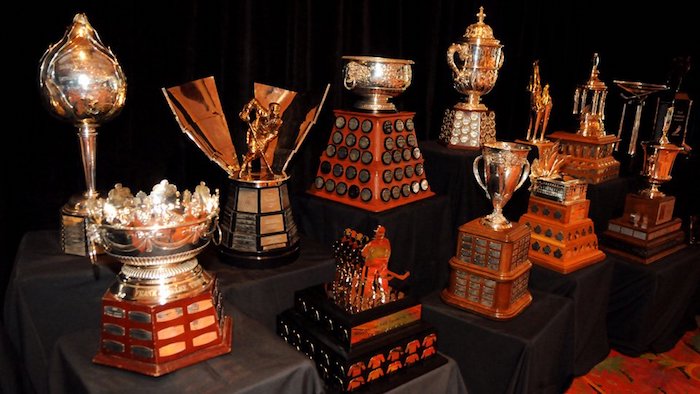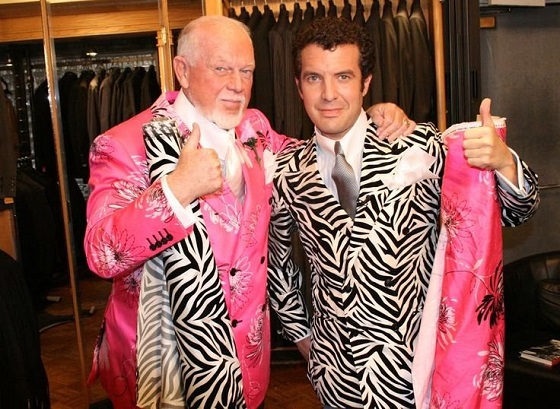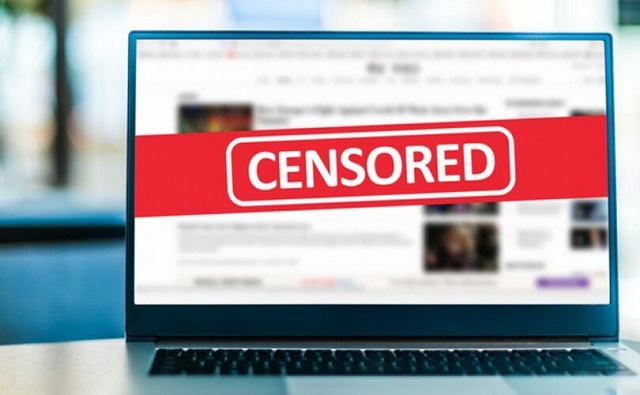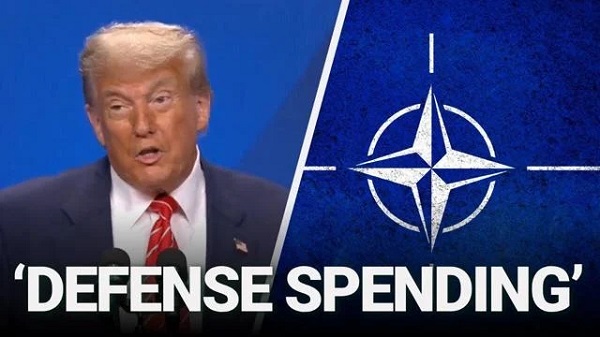Bruce Dowbiggin
What’s In A Name: For The NHL’s Historic Award, Everything

It should come as little surprise at the dawn of 2023 when the arc of history is defined as the period stretching back to Pete Davidson’s last squeeze. But the history-in-a-hurry brigade turning its attention the NHL is still a little unsettling. The concept of dumping the league’s history in favour of blog talking points for Millennials has taken root.
If the attention-deficit mob— who love changing names of universities or toppling statues to suit the mood— has its way, the league will remove the names of its founders and legends in place of the heroes of the post-expansion era. Which would be a loss. The Hart Trophy— donated in 1923 by David Hart, the father of legendary head coach of Montreal Canadiens coach Cecil Hart— honours the man who made the Habs into a dynasty.
The Norris Trophy— named for James E. Norris, owner of the Detroit Red Wings from 1932 to 1952— has honoured the league’s top defenceman since 1953. The Adams Award honours Jack Adams, Hall of Fame player for Toronto, Detroit and Ottawa, and long-time coach/ general manager of the Red Wings.
The Vezina Trophy remembers Georges Vezina, legendary goaltender of the Canadiens from 1910 until 1925, who died in 1926 of tuberculosis. The Art Ross Trophy going to the scoring leader commemorates the founder of the Boston Bruins from 1924-54 who lost a son during WW II. The Lady Byng Trophy honours the wife of Viscount Byng of Vimy, who commanded Canadian forces at the Battle of Vimy Ridge (Lady Byng was also an avid hockey fan.)

And so on, for the Jennings Trophy, the Rocket Richard Trophy and the Selke Trophy. These were real people and they built the NHL. They should stay exactly where they are. Yes, Gary Bettman now is down with non-binary hockey. But changing the brand of a sport just to feel au courant with Woke sensibilities seems just a little too much of a reach— even for him.
It’s understandable that people who know nothing before the 1967 expansion era might prefer to honour Gordie Howe, Wayne Gretzky, Mario Lemieux, Guy Lafleur and Bobby Orr in some fashion. Howe, who died in 2016, is now past being recognized in the flesh. Guy Lafleur— The Flower— left us just a few months back. They, too, were real people and they also built the NHL.
So, say the hasty puddings, the NHL should treat the pioneers of the game like some statue of Sir John A. Paint and pitchforks. In the rush to institutionalize the more recent legends while they’re still with us they believe it’s okay to toss away the pedestal the NHL is built upon.
That opportunity was missed when the league exhausted its creative juices on exotic names such as Metropolitan, Atlantic, Central and Pacific for the four divisions now in existence. How would it have hurt the integrity of the league if the Pacific were the Gretzky Division, the Central the Howe Division, the Atlantic the Orr Division and the Metropolitan the Lemieux Division? Not a bit.
You get modern heroes (divisions) and the game’s founders (trophies) all at the same time. But that Zamboni has left the harbour till more pointless expansion forces the league to re-arrange its divisions yet again. Or Bettman sails off into a limousine retirement.
The only solution now is not to change the brand of the historic titles but simply add a few new awards that might tie-in the past and present for fans who think the Hartford Whalers were a sandwich at Jack In The Box. Some suggestions:
The Borje Salming Award: For the top European player of the season.

TURIN, ITALY – FEBRUARY 24: Nicklas Lidstrom #5 of Sweden shake hands with Ales Kotalik #22 of Czech Republic after they won the semi final of the men’s ice hockey match between Sweden and Czech Republic during Day 14 of the Turin 2006 Winter Olympic Games on February 24, 2006 at the Palasport Olimpico in Turin, Italy. Sweden won 7-3 to reach the final. (Photo by Brian Bahr/Getty Images)
The Alex Ovechkin Trophy: For the player who is the most obsequious apologist for a vicious dictator whose initials are VP.

The Brad Marchand Trophy: Awarded to the player whom opponents would most like to put through the plexiglas.
The Johnny Gaudreau Geography Prize: To a Pacific Division player who says he want to be closer to his family in New Jersey but then signs to play in Columbus, Ohio.

The Guy Lafleur Memorial Award: To the outstanding French Canadian player who still is willing to play in the Montreal fish bowl. It will be unclaimed most years.

Jarred Tinordi #24 of the Montreal Canadiens fights with Cody McLeod #55 of the Colorado Avalanche in the NHL game at the Bell Centre on October 18, 2014 in Montreal, Quebec, Canada. (Francois Lacasse/NHLI/Getty Images)
The Gabby Boudreau “I’ve Been Everywhere” Prize: To the man who leads the league in forwarded mail addresses and lost rent deposits.
The Ron Maclean Prize: To the announcer who conducts the most baffling, cringey interview strewn with bad puns during a season.

And finally, the Gary Bettman Cup: Awarded to the NHL executive who’s so tin- eared, so vain, so unaware that he allows himself to be enshrined in the Hockey Hall of Fame while he’s still commissioner of the league that runs the HHoF. There can be just one recipient for this puck-headed prize..
Sign up today for Not The Public Broadcaster newsletters. Hot takes/ cool slants on sports and current affairs. Have the latest columns delivered to your mail box. Tell your friends to join, too. Always provocative, always independent. https://share.hsforms.com/16edbhhC3TTKg6jAaRyP7rActsj5
Bruce Dowbiggin @dowbboy is the editor of Not The Public Broadcaster A two-time winner of the Gemini Award as Canada’s top television sports broadcaster, he’s a regular contributor to Sirius XM Canada Talks Ch. 167. Inexact Science: The Six Most Compelling Draft Years In NHL History, his new book with his son Evan, was voted the seventh-best professional hockey book of all time by bookauthority.org . His 2004 book Money Players was voted sixth best on the same list, and is available via http://brucedowbigginbooks.ca/book-personalaccount.aspx
Bruce Dowbiggin
The Game That Let Canadians Forgive The Liberals — Again

With the Americans winning the first game 3-1, a sense of panic crept over Canada as it headed to Game 2 in Boston. Losing a political battle with Trump was bad enough, but losing hockey bragging rights heading into a federal election was catastrophic for the Family Compact.
“It’s also more political than the (1972) Summit Series was, because Canada’s existence wasn’t on the line then, and it may be now. You’re damn right Canadians should boo the (U.S.) anthem.” Toronto Star columnist Bruce Arthur before Gm. 1 of USA/ Canada in The 4 Nations Cup.
The year 2025 is barely half over on Canada Day. There is much to go before we start assembling Best Of Lists for the year. But as Palestinian flags duel with the Maple Leaf for prominence on the 158th anniversary of Canada’s becoming a sovereign country it’s a fair guess that we will settle on Febuary 21 as the pivotal date of the year— and Canada’s destiny as well.
That was the date of Game 2 in the U.S./Canada rivalry at the Four Nations Tournament. Ostensibly created by the NHL to replace the moribund All Star format, the showdown of hockey nations in Boston became much more. Jolted by non-sports factors it became a pivotal moment in modern Canadian history.
Set against U.S. president Donald Trump’s bellicose talk of Canada as a U.S. state and the Mike Myers/ Mark Carney Elbows Up ad campaign, the gold-medal game evoked, for those of a certain age, memories of the famous 1972 Summit Series between Canada and the USSR. And somehow produced an unprecedented political reversal in Canadian elections.
As we wrote on Feb. 16 after Gm. 1 in Montreal, the Four Nations had been meant to be something far less incendiary. “Expecting a guys’ weekend like the concurrent NBA All Star game, the fraternal folks instead got a Pier Six brawl. It was the most stunning beginning to a game most could remember in 50 years. (Not least of all the rabid Canadian fanbase urging patriotism in the home of Quebec separation) Considering this Four Nations event was the NHL’s idea to replace the tame midseason All Star Game where players apologize for bumping into each other during a casual skate, the tumult as referees tried to start the game was shocking.
“Despite public calls for mutual respect, the sustained booing of the American national anthem and the Team Canada invocation by MMA legend Georges St. Pierre was answered by the Tkachuck brothers, Matthew and Brady, with a series of fights in the first nine seconds of the game. Three fights to be exact ,when former Canuck J.T. Miller squared up with Brandon Hagel. (All three U.S. players have either played on or now play for Canadian NHL teams.)
“Premeditated and nasty. To say nothing of the vicious mugging of Canada’s legend Sidney Crosby behind the U.S. net moments later by Charlie McEvoy.”
With the Americans winning the game 3-1 on Feb. 15, a sense of panic crept over Canada as it headed to Game 2 in Boston. Losing a political battle with Trump was bad enough, but losing hockey bragging rights heading into a federal election was catastrophic for the Family Compact. As we wrote in the aftermath, a slaughter was avoided.

“In the rematch for a title created just weeks before by the NHL the boys stuck to hockey. Anthem booing was restrained. Outside of an ill-advised appearance by Wayne Gretzky— now loathed for his Trump support— the emphasis was on skill. Playing largely without injured Matthew and Brady Tkachuk and McAvoy, the U.S. forced the game to OT where beleaguered goalie Craig Binnington held Canada in the game until Connor McDavid scored the game winner. “
The stunning turnaround in the series produced a similar turnaround in the Canadian federal election. Galvanized by Trump’s 51st State disrespect and exhilarated by the hockey team’s comeback, voters switched their votes in huge numbers to Carney, ignoring the abysmal record of the Liberals and their pathetic polling. From Pierre Poilievre having a 20-point lead in polls, hockey-besotted Canada flipped to award Carney a near-majority in the April 28 election.
The result stunned the Canadian political class and international critics who questioned how a single sporting event could have miraculously rescued the Liberals from themselves in such a short time.

While Canada soared because of the four Nations, a Canadian icon crashed to earth. “Perhaps the most public outcome was the now-demonization of Gretzky in Canada. Just as they had with Bobby Orr, another Canadian superstar living in America, Canadians wiped their hands of No. 99 over politics. Despite appeals from Orr, Don Cherry and others, the chance to make Gretzky a Trump proxy was too tempting.
We have been in several arguments on the subject among friends: Does Gretzky owe Canada something after carrying its hockey burden for so long? Could he have worn a Team Canada jersey? Shouldn’t he have made a statement that he backs Canada in its showdown with Trump? For now 99 is 0 in his homeland.”
Even now, months later, the events of late February have an air of disbelief around them, a shift so dramatic and so impactful on the nation that many still shake their heads. Sure, hockey wasn’t the device that blew up Canada’s politics. But it was the fuse that created a crater in the country.
Bruce Dowbiggin @dowbboy is the editor of Not The Public Broadcaster A two-time winner of the Gemini Award as Canada’s top television sports broadcaster, his new book Deal With It: The Trades That Stunned The NHL And Changed hockey is now available on Amazon. Inexact Science: The Six Most Compelling Draft Years In NHL History, his previous book with his son Evan, was voted the seventh-best professional hockey book of all time by bookauthority.org . His 2004 book Money Players was voted sixth best on the same list, and is available via brucedowbigginbooks.ca.
Bruce Dowbiggin
Don & Rick: Canadian Icons, Mixed Messages, Lasting Impacts

“Well, Tim, this is our last show. . . . Thanks everybody for listening and toodaloo,” 91-year old Don Cherry allegedly on his final podcast episode.
Once upon a time in a public broadcaster far, far away there was an identity crisis. Who should we be as we enter the 21st century? We depend on government for our financing, but our audience relies on people who hate government.
At CBC that argument could be summed up by two figures on the TV network. Rick Mercer. Don Cherry. Both were brilliant communicators, masters of the craft of holding eyeballs. But they represented diametrically opposed audiences. Mercer was the glib political voice of This Hour Has 22 Minutes. Cherry was the bombastic voice of Hockey Night in Canada, as Canadian as the brown beer stubby.
Mercer was worshipped by the folks in the C suite and liberal media. With his searing walking shots he lanced egos and asked uncomfortable questions. He called out sacred cows. Yet there was never any doubt in CBC’s upper reaches about whose side he was on in the culture war at CBC. He was safe.
Cherry was the unpredictable occupant of Coach’s Corner, the bombastic voice of white anglo hockey culture. He was abrasive and unforgiving. His first-period rants beside his Topo Gigio Ron Maclean were must-watch for the demographic. They also, it seemed, constituted must watching for his critics.
[Confession: I was one of his critics, paid to be so. We tangled often over his act. He ripped me in the 2004 NHL playoffs, alleging I said he was insincere about kids with cancer. During the infamous 1987 World Junior brawl he said I was a coward who wouldn’t defend his own kids in a fight. etc. He sicced his bots on me. While I disagreed with much of what he said, I defended his right to say such things. My beef was mostly with HNIC which refused to allow any dissent to Cherry’s act on the show . It was a noisy one-note symphony.

Don was durable, holding his prime position for decades, putting himself above the title many Saturdays with headline material. In the sea of pearl clutchers at CBC he stood out. While the suits above recoiled at his Canadian Legion catechism, they also knew he was an asset they could play when they went for funding in Ottawa. “See, we have all sorts of political views on the network.”
When CBC lost its HNIC franchise to Sportsnet Cherry became someone else’s problem. Eventually the Woke folk at Rogers tired of telling him to knock off the politics and cultural stuff. He was let go in 2019 for saying what he’d always said. Maclean then put in the knife to save his own hide.
Mercer’s highly rated act continued unabated till 2018. One of his most popular gigs— the one most likely to appeal to posh Canadians— was talking to Americans about Canada. It was brilliant in its simplicity. Go to famous colleges and universities to plumb the depths of their Canadian knowledge. Likewise, buttonhole well-known American politicians.

The topics were many and ridiculous. Should Canada protect the famous location Joe Clark’s Hole? What should Canada do about its melting national igloo? Could they congratulate Jean Chretien on a rare political feat called a “Double Double” in which he received support from both sides of the Canadian parliament.
He asked Al Gore about Canada moving the capital city from Kingston, Ontario to Toronto (Gore thought it smart). He convinced tourists at Mount Rushmore that the mineral rights to the mountain had been sold to a Canadian firm that was getting ready to drill for oil in Lincoln’s forehead.
He asked Americans to condemn Canada’s practice of euthanizing senior citizens by setting them adrift on Northern ice floes. In a famous moment, future President George W. Bush failed to correct Mercer when he referred to Chrétien as “Jean Poutine”
Mercer always said he didn’t think Americans were ignorant. Eighty percent had the right responses and those never made it to air. For the rest it was just that they couldn’t resist an open mike and having a take on things they knew nothing about. He had affection for them.
For Canada’s Left, insecure in its northern faculty-lounge, that subtlety was lost. Mercer’s routines reinforced a smug anti-American attitude in the Liberals and NDP base. All they saw was a nation of nitwits. “Look, what bozos!” The orientation of the fashionistas turned away from the U.S. to supposed European sophistication and societal controls for climate, population growth and Covid. Hello, Mark Carney.
This bias was reinforced by the increasingly self-loathing voices on the cable news of the American Left. Every GOP figure from George W. Bush till Trump today became a comic character. Canadian lefties adored it. As we’ve written often the snide attitude allowed Canadians to ignore that Americans were protecting them for free and keeping them rich. And taking the overflow from Canadian’s prized healthcare system.
This arrogance culminated in the March election where the mere mention of Trump sent Canadians fleeing back to a Liberal administration that was moribund after a decade of incompetence. It has an echo in Toronto’s Hockey Hall of Fame again declining to award Cherry the Foster Hewitt award as a legendary TV journalist. Love him or hate him he’s earned it. It’s arguable whether the aging Cherry will even be around to be chosen next year.
For sure his political impact will resonate for long after he’s gone in the populist resurgence in western Canada and elsewhere. If only Rick Mercer were allowed back on CBC to cover it.
Bruce Dowbiggin @dowbboy is the editor of Not The Public Broadcaster A two-time winner of the Gemini Award as Canada’s top television sports broadcaster, his new book Deal With It: The Trades That Stunned The NHL And Changed hockey is now available on Amazon. Inexact Science: The Six Most Compelling Draft Years In NHL History, his previous book with his son Evan, was voted the seventh-best professional hockey book of all time by bookauthority.org . His 2004 book Money Players was voted sixth best on the same list, and is available via brucedowbigginbooks.ca.
-

 Business1 day ago
Business1 day agoCanada Caves: Carney ditches digital services tax after criticism from Trump
-

 Alberta1 day ago
Alberta1 day agoAlberta judge sides with LGBT activists, allows ‘gender transitions’ for kids to continue
-

 Crime18 hours ago
Crime18 hours agoNational Health Care Fraud Takedown Results in 324 Defendants Charged in Connection with Over $14.6 Billion in Alleged Fraud
-

 Business7 hours ago
Business7 hours agoElon Musk slams Trump’s ‘Big Beautiful Bill,’ calls for new political party
-

 Censorship Industrial Complex6 hours ago
Censorship Industrial Complex6 hours agoGlobal media alliance colluded with foreign nations to crush free speech in America: House report
-

 Crime1 day ago
Crime1 day agoSuspected ambush leaves two firefighters dead in Idaho
-

 Business1 day ago
Business1 day agoMassive government child-care plan wreaking havoc across Ontario
-

 Alberta1 day ago
Alberta1 day agoAlberta Independence Seekers Take First Step: Citizen Initiative Application Approved, Notice of Initiative Petition Issued






